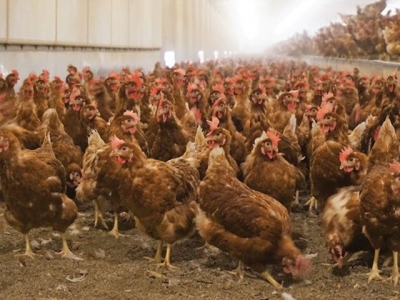How to prepare for an antibiotic ban in poultry and pig feed

In-feed antibiotics and antimicrobial agents have been banned in the European Union. Now, other countries are following suit.
Guidelines for feeds without growth-promoting antibiotics, focusing on animal health, feed formulation, and available additives.
Poultry and pig feeds without antibiotics are now a reality in the European Union, whereas in other countries the use of such antibiotics is under strict control with skepticism over their long-term prospects increasing by the day.
Hard-earned experiences from Europe may offer a first insight on how to create feeds without antibiotics, either for the domestic market (as a look-ahead movement) or for exporting purposes.
Controls, regulations ahead
In-feed antibiotics and antimicrobial agents have been banned in the European Union. Now, other countries are following suit (South Korea), or looking into ways to control antibiotic usage (United States). If not a complete ban, it is logical to assume regulations will become so strict in many countries that using antibiotics for animal growth purposes will be strongly discouraged.
From experiences realized through working in the European feed industry, it is now understood that the most important aspect in replacing antibiotics is to realize that no single “additive” can offer a quick solution. It is equally important to appreciate that feeds without antibiotics will be invariably more expensive.
To prepare for such time as when in-feed antibiotics will no longer be desirable (or allowed) in poultry and pig feed, there are three major areas of concern that need to be addressed:
Farm biosecurity
Without doubt, antibiotics offered a high level of security against most common pathogens. Without in-feed antibiotics, however, the whole farm biosecurity protocol must be reevaluated and most likely elevated to new standards. Assuming that under current commercial conditions, the achieved level of health status of animals is always around “average,” we must still rely on certain additives. However, having a strict biosecurity protocol in place will reduce reliance on (expensive) antibiotic in-feed alternatives.
Feed formulation
Antibiotics allow feeds to be high in crude protein because they control excess bacterial growth from any undigested protein. Without antibiotics, however, crude protein levels must be drastically reduced to ensure animals receive exactly only what they need for their own purposes. The same logic applies to iron, which is known to be required for the growth of pathogenic strains of Escherichia coli, a very common pathogen responsible for diarrheas in young animals.
Likewise, cereals that enhance digesta viscosity (rye, wheat, triticale) should be minimized as this reduces gut motility and increases the time available for pathogens to colonize the gut. In contrast, crude fiber must be increased, and to same effect, feed particle size must be increased, as coarser feed has been shown to reduce pathogenic bacteria colonization.
Additives
This is perhaps the most widely discussed topic in terms of replacing antibiotics, but most such additives fail to elicit the expected response, only because the above two areas of concern have not been previously addressed. From empirical experiences, the most potent additives in terms of replacing in-feed antibiotics are:
* Zinc oxide
* Copper sulfate
* Organic acids (not all are equally effective)
* Essential oils (only limited action, best when combined with the above)
The above have a record of bacteriostatic and (or) bacteriocidic activity, so they work along the lines of common antibiotics. Other additives, however, can be used to indirectly enhance gut health status. These include:
* Enzymes, when feed is rich in non-starch polysaccharides that enhance viscosity.
* Probiotics, to enhance the numbers of “good” bacteria at the expense of the pathogenic ones.
* Functional fibers, again to enhance the “good” bacteria by offering them direct nourishment.
* Immunoglobulins, that attack pathogens in a direct and very specific manner.
Naturally, there are even more available additives, but the above have been shown to be the most widely used. Of course, not all of them should be used in any single feed, but according to feed formulation philosophy, certain additives do offer extra advantages.
Related news
 8 considerations for cage-free laying hen nutrition
8 considerations for cage-free laying hen nutrition Egg producers must account for more than just housing when changing production practices
 Study shows feed efficiency gains in Canadian egg production over time
Study shows feed efficiency gains in Canadian egg production over time Innovation in feed formulation has helped the Canadian egg industry reduce its environmental footprint during the last 50 years, says researcher.
 Tips for feeding chickens in a start-up poultry business
Tips for feeding chickens in a start-up poultry business Setting up a poultry start-up business in developing countries requires a number of decisions regarding the nutrition of birds.